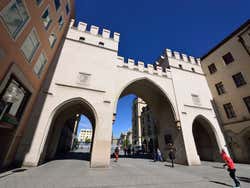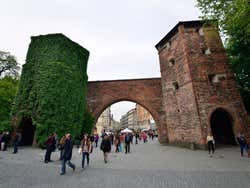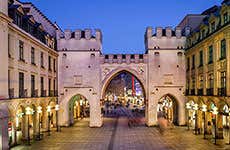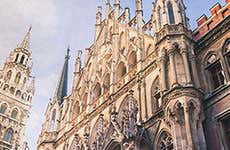
Munich City Gates
Karlstor, Isartor and Sendlinger Tor are the three gates that remain from Munich's Medieval city walls. They're an important tourist attraction in the city and a great reminder of its long history.
During the Middle Ages, Munich's historic centre, the Altstadt, was protected by a wall. Built between 1285 and 1347, and replacing an early smaller wall, the fortification featured four large towers that served as entrances to the city, known as "tor" in German. In the 18th century, as the Bavarian capital expanded, the Medieval walls were demolished, and only three gateways remain of it today.
Karlstor
Historically known as Neuhauser Tor and renamed in 1797 after the construction of Karlsplatz, Karlstor was originally made up of three towers. However, the tallest tower was destroyed in 1857 after the gunpowder stored there exploded. The side towers were reconstructed in Neo-Gothic style several years later.
Isartor
Built in 1337 in the east of Munich, Isartor earned its name from its proximity to the River Isar which crosses through the city. The gate was restored in 1833, and again following serious damage during the Second World War. It is the only one of Munich's city gates to still have its central tower, and is today home to a museum dedicated to German comedian Karl Valentin.
Sendlinger Tor
Located at the southmost point of Munich's Old Town, Sendlinger Tor is the oldest of the city towers. It was built in 1318 as the gateway for traders travelling to Italy. While it has conserved its Gothic style through many renovations over the centuries, what was first a central tower - and later three small arches - between the two towers, is now one large arch created to allow traffic through.



